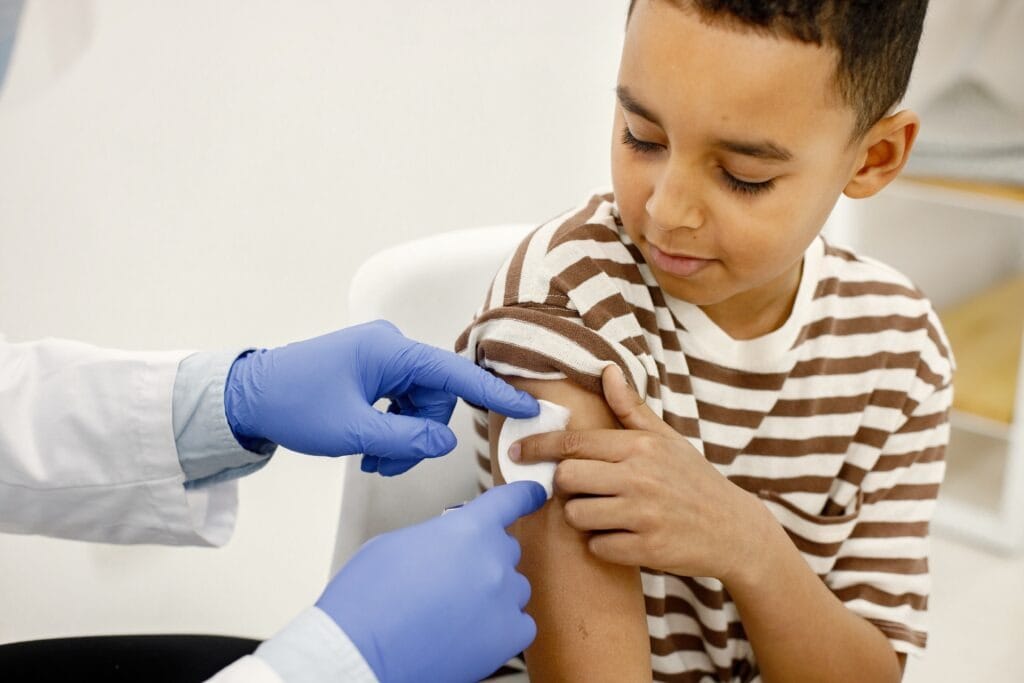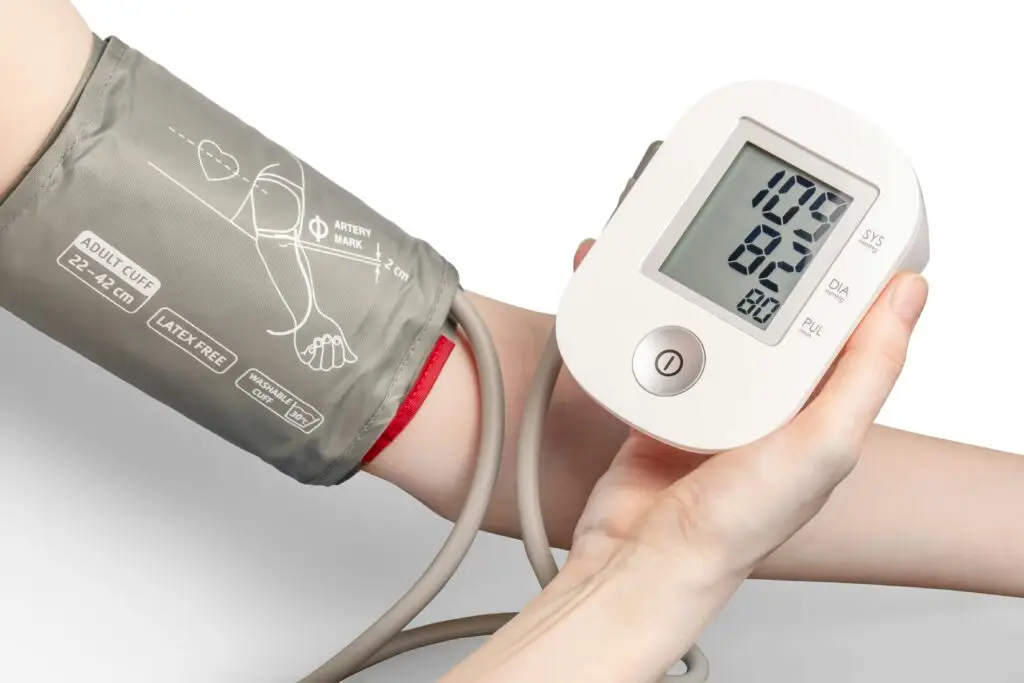
Childhood vaccination plays a vital role in safeguarding childrens lives from serious and preventable diseases worldwide. In today’s digital age, misinformation about vaccines can spread rapidly, it is thus more important than ever for parents and caregivers to have access to accurate, science-based information. This article explains what childhood vaccination involves, its proven benefits, the history of immunisation, its global impact, how to plan your child’s vaccine schedule, the role of insurance and healthcare systems, and the science that makes vaccines effective. Whether you live in London or New york, vaccinating your child protects not only them but also the wider community.
What is Childhood Vaccination? Global Statistics and Overview
Childhood vaccination refers to the administration of vaccines to infants, toddlers, and young children to protect them against infectious diseases that can cause severe illness, disability, or death. Vaccines work by introducing a safe, weakened, or inactivated form of a pathogen (like a virus or bacterium) into the body, prompting the immune system to develop defenses without causing the actual disease.
Globally, childhood vaccination has been a game-changer. According to the latest data from WHO and UNICEF, in 2024, 85% of infants worldwide received the third dose of the diphtheria-tetanus-pertussis (DTP3) vaccine, a key marker for routine immunization coverage. This coverage helps avert an estimated 4.4 million deaths annually from vaccine-preventable diseases. However, challenges persist: over 14.5 million children under age 1 remained unvaccinated in 2023, leaving them vulnerable to outbreaks. In regions like the UK, US, and Australia, coverage rates are higher, often exceeding 90% for key vaccines, but gaps due to hesitancy or access issues can lead to localized surges in diseases like measles.
These statistics underscore the ongoing need for robust vaccination programs. In high-income countries like the US and UK, vaccination rates for children at age 5 hover around 93-95%. Yet, global stagnation in coverage since the COVID-19 pandemic highlights the urgency to maintain momentum.
Vaccination in Children: Historical Incidents and Key Diseases
The need for childhood vaccination arose from devastating historical incidents where infectious diseases ravaged populations, particularly children. Before widespread vaccination, diseases like measles and polio claimed millions of lives and caused lifelong disabilities.
Measles, one of the most contagious viruses known, has been documented since the 9th century by Persian physician Abū Bakr Muhammad Zakariyyā Rāzī. In the pre-vaccine era (before 1963 in the US), measles infected nearly every child by age 15, causing about 2.6 million deaths annually worldwide. Outbreaks led to encephalitis (brain swelling) in 1 in 1,000 cases and death in 1-2 per 1,000. A stark incident was the 2019 US measles outbreak, the largest since 1992, with over 1,000 cases linked to low vaccination rates in communities, resulting in hospitalizations and long-term complications. In Europe, 2024 saw a nearly tenfold increase in cases due to coverage dips.
Polio, another life-threatening disease, paralyzed thousands annually before vaccines. The 1952 US polio epidemic affected over 21,000 people, many children, leading to iron lungs and permanent disability. Globally, polio once paralyzed 350,000 children yearly; vaccination efforts have reduced cases by 99% since 1988. However, outbreaks persist in areas like Afghanistan and Pakistan due to under-vaccination.
Other diseases like whooping cough (pertussis), diphtheria, and rubella also drove vaccination needs. The 1916-1917 pertussis epidemic in the US killed thousands of infants, emphasizing the vulnerability of young children. These incidents highlight how unvaccinated populations can fuel resurgences, as seen in recent Australian measles clusters or UK whooping cough spikes. Childhood vaccination programs in the UK and the US have dramatically reduced these threats, but vigilance is key.
Benefits of Childhood Vaccination: Why Children Need Them and How Safe They Are
Children need vaccines because their immune systems are developing and more susceptible to infections. Vaccines provide early protection against diseases that can spread rapidly in schools and communities.
What Are the Benefits?
- Disease Prevention: Vaccines prevent serious illnesses like measles (which can cause pneumonia or death), polio (paralysis), and hepatitis B (liver damage). They save lives, measles vaccines alone have prevented over 23 million deaths since 2000.
- Community Immunity (Herd Immunity): When 95% of a population is vaccinated, it protects vulnerable groups like newborns or immunocompromised children who can’t get vaccinated.
- Long-Term Health and Economic Gains: Vaccination reduces hospitalization costs and lost productivity. It’s cost-effective, averting broader impacts like developmental delays from diseases.
- Global Equity: In the UK, US, and Australia, high coverage ensures fewer outbreaks, benefiting society.
How Safe Are They?
Vaccines are among the safest medical interventions. They undergo rigorous testing, including clinical trials with thousands of participants, before approval. Side effects are usually mild—redness at the injection site, low fever, or fatigue—and resolve quickly. Serious reactions, like severe allergies, occur in about 1 in a million doses. Myths, such as links to autism, have been debunked; a fraudulent 1998 study was retracted. In the US, the Vaccine Adverse Event Reporting System monitors safety, confirming vaccines’ benefits far outweigh risks.
Effective Planning for Childhood Vaccination
Planning ensures timely protection. Start discussions with your healthcare provider during pregnancy or at birth.
When Should You Get Your Child Vaccinated?
Follow national schedules to align with when children are most at risk. Doses are spaced to build immunity effectively.
Here’s a comparative table of childhood vaccination schedules for the US, UK, and Australia (based on official guidelines; always confirm with local providers):
| Age | US (CDC) | UK (NHS) | Australia (NIP) |
| Birth | Hepatitis B | None (unless at risk) | Hepatitis B |
| 2 months | DTaP, Hib, IPV, PCV, RV, Hep B | 6-in-1 (DTaP/IPV/Hib/HepB), PCV, RV, MenB | 6-in-1, PCV, RV |
| 4 months | DTaP, Hib, IPV, PCV, RV | 6-in-1, PCV, RV | 6-in-1, PCV, RV, MenB (Indigenous) |
| 6 months | DTaP, Hib, IPV, PCV, Hep B (if needed) | 6-in-1, PCV, MenB | 6-in-1, PCV |
| 12–15 months | MMR, Varicella, Hib, PCV, Hep A | MMR, Hib/MenC, PCV, MenB | MMR, Hep A (Indigenous) |
| 18 months | DTaP, Hep A | None | DTaP, Hib, MMRV |
| 4–6 years | DTaP, IPV, MMR, Varicella | DTaP/IPV booster, MMR | DTaP/IPV |
(Note: Abbreviations: DTaP – Diphtheria, Tetanus, Pertussis; Hib – Haemophilus influenzae type b; IPV – Inactivated Polio; PCV – Pneumococcal; RV – Rotavirus; MMR – Measles, Mumps, Rubella; MenB – Meningococcal B.)
This “graph” in table form shows progression; early months focus on core protections, with boosters later.
Where to Get Vaccinated
- UK: Free via NHS at GP surgeries, health clinics, or child health centers. Book via NHS app or call 111.
- US: Pediatricians, family doctors, community health centers, pharmacies (e.g., CVS), or schools. Many are free under insurance.
- Australia: GPs, community health services, or Aboriginal health services. Covered by Medicare; no appointment needed at some clinics.
Catch-up schedules are available if doses are missed.
Health Insurance and Vaccination
Access to childhood vaccination varies by country, influenced by health systems and insurance.
In the US, the Affordable Care Act (ACA) mandates that most health insurance plans cover recommended childhood vaccines as preventive services without cost-sharing (no copays or deductibles). This includes private insurance, Medicaid (for low-income families), and the Vaccines for Children (VFC) program, which provides free vaccines to uninsured or underinsured kids up to age 18. However, out-of-pocket costs can arise if using out-of-network providers. Employer-sponsored plans often include vaccination coverage, but details vary—check your policy.
The UK‘s National Health Service (NHS) provides all routine childhood vaccinations free of charge, regardless of insurance status. No private health insurance is needed, as the NHS is publicly funded. For those with private insurance (e.g., Bupa), it may cover travel vaccines but not routine ones, which are already NHS-covered.
In Australia, the Medicare system funds the National Immunisation Program (NIP), making childhood vaccines free for all eligible children via GPs or clinics. Private health insurance extras policies can cover additional non-NIP vaccines (e.g., travel-related) from about $6/week, but routine ones like MMR are fully subsidized. For Indigenous children, extra protections are available.
Overall, these systems prioritize accessibility, but insurance helps with non-routine needs.
Immunization and Vaccination: Definitions and How They Work
What is Immunization?
Immunization is the process by which a person becomes protected against a disease through the development of immunity. It can occur naturally (after infection) or artificially (via vaccination). It results in the body’s ability to fight off future infections.
What is Vaccination?
Vaccination is the specific act of administering a vaccine to stimulate immunity. It’s a method to achieve immunization without the risks of natural infection.
How Do They Work?
Vaccines mimic infection by introducing antigens—harmless parts of a pathogen (e.g., weakened virus in MMR or protein in COVID-19 mRNA vaccines). The immune system responds by producing antibodies and memory cells. If the real pathogen invades later, these defenses activate quickly, preventing illness. For example, the polio vaccine uses inactivated virus to train the body without causing paralysis. It takes 1-3 weeks for full response, often requiring multiple doses for lasting protection (up to 10 years for some, like tetanus). Unlike natural infection, vaccines don’t overwhelm the immune system—they strengthen it safely.
Common Questions on Immunization and Vaccination
Here are answers to frequent queries, based on expert sources:
Q: Are vaccines safe for my child?
A: Yes, vaccines are rigorously tested and monitored. Side effects are mild; serious ones are rare (1 in a million). Your child is more at risk from the disease than the vaccine.
Q: Do vaccines cause autism?
A: No, extensive studies show no link. The myth stems from a retracted, fraudulent study.
Q: Can too many vaccines overwhelm a child’s immune system?
A: No, children’s immune systems handle thousands of antigens daily. Vaccines use far fewer and are spaced for safety.
Q: Why vaccinate if diseases are rare?
A: Rarity is due to vaccination; stopping could lead to outbreaks, as seen with measles.
Q: What if my child misses a dose?
A: Catch-up schedules exist, consult your doctor. Protection builds with each dose.
For personalized advice, speak to a healthcare professional in your region. Vaccination isn’t just a choice; it’s a responsibility for community health.
Quick links
https://www.cdc.gov/mmwr/volumes/73/wr/mm7331a2.htm
https://www.nhs.uk/vaccinations/why-vaccination-is-important-and-the-safest-way-to-protect-yourself/
https://www.who.int/health-topics/vaccines-and-immunization
https://www.cdc.gov/vaccines-children/reasons/index.html
https://drzarmulla.com

